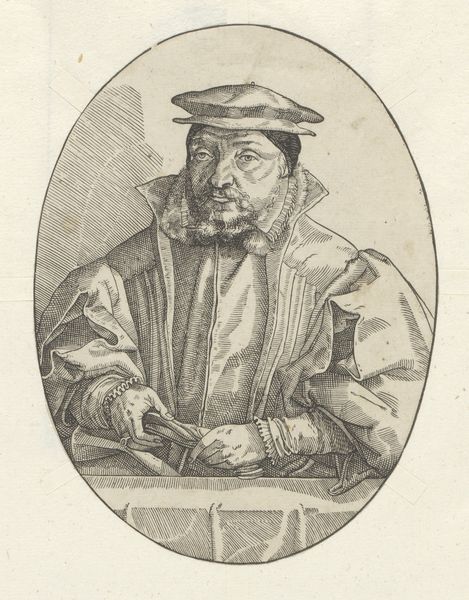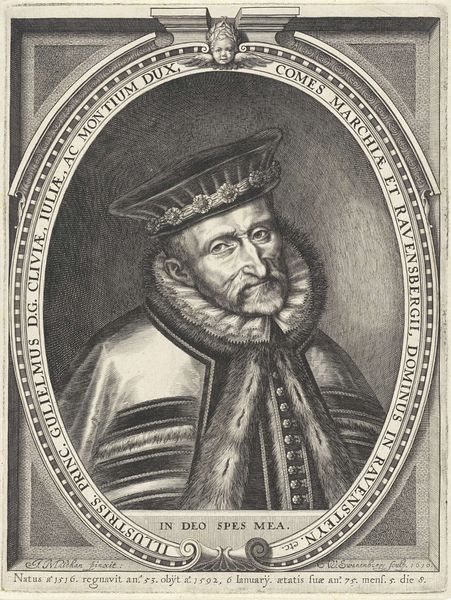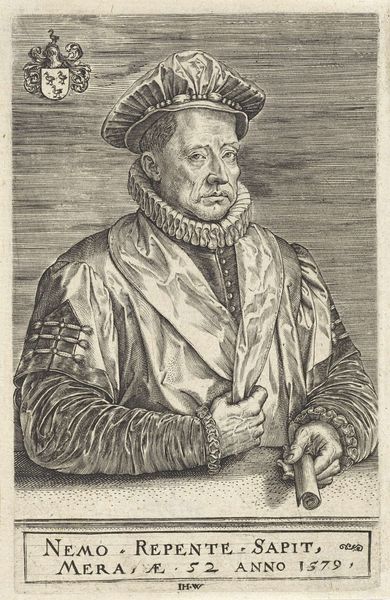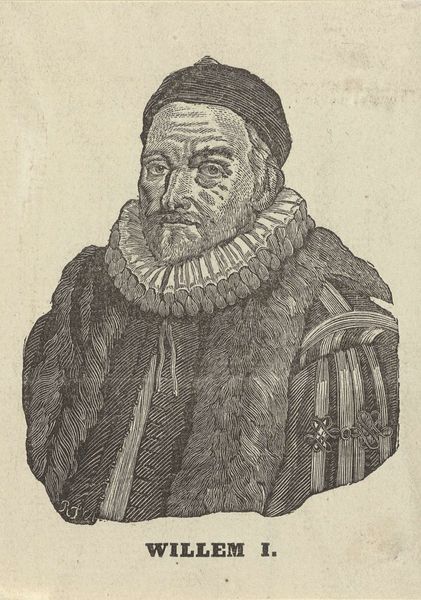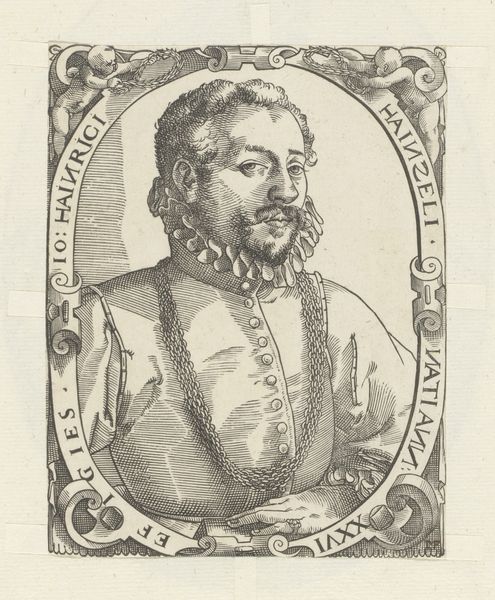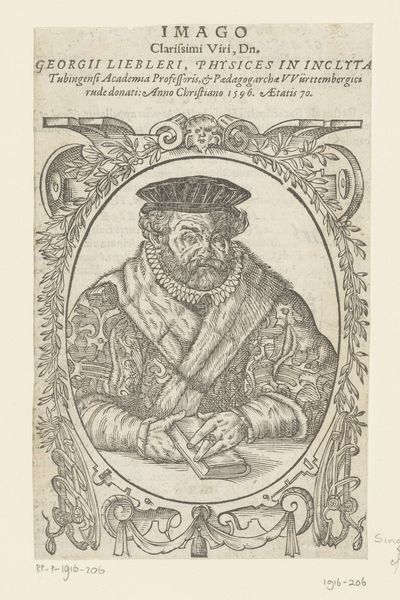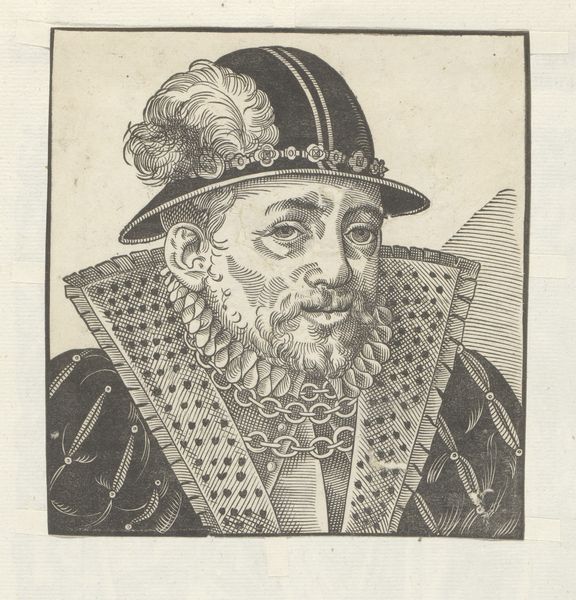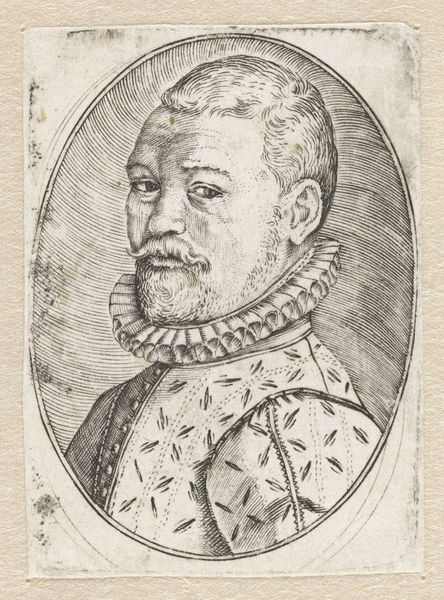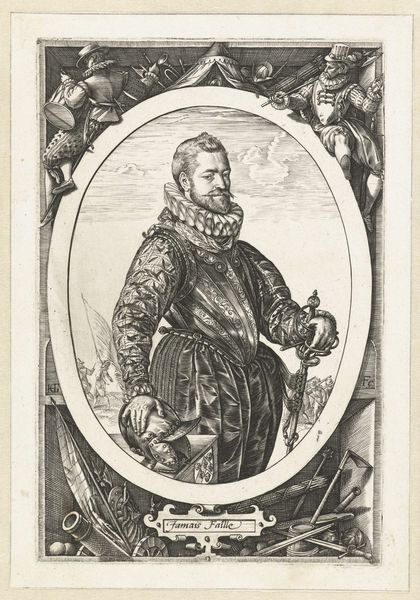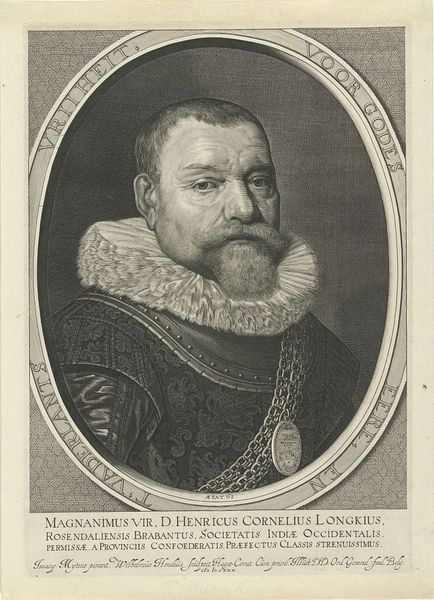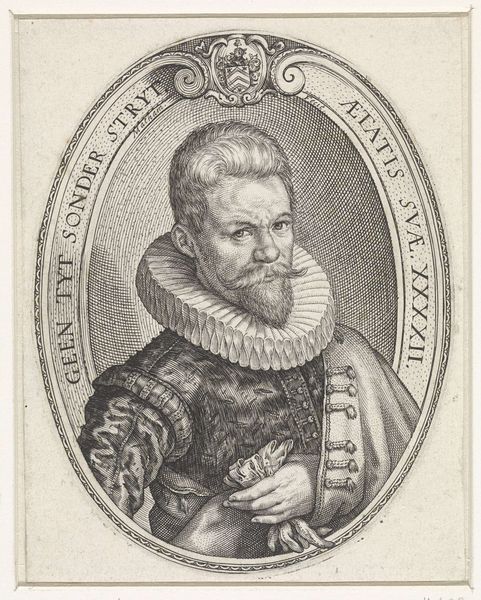
print, engraving
#
portrait
# print
#
11_renaissance
#
portrait drawing
#
engraving
Dimensions: height 150 mm, width 112 mm
Copyright: Rijks Museum: Open Domain
Curator: Here we have a striking Renaissance portrait, "Portret van Sigmund Feyerabend," dating from between 1549 and 1584. This likeness comes to us via an engraving, a print. Editor: My initial impression is one of subdued authority. The man exudes power, but there's a weight, a gravity to him as well. I’m particularly struck by the crispness of the lines and how they render such texture in the fur and fabric of his coat. Curator: The portrait does convey the sitter's social standing through his opulent attire, notably the fur-lined coat. But beyond the surface, what socio-political narratives are subtly present in the engraving's detail? How are notions of masculinity constructed here through dress, posture, and gaze? Editor: Good questions. We must also consider the actual making of this object, the labor involved in its creation. Think of the engraver meticulously carving into the metal plate to produce these very lines that capture not just likeness but texture and depth. The print served as a commodity. The exchange is of primary interest; whose hand directly interacted with this portrait? Was the publisher, the artist, or Feyerabend most rewarded from the engraving production and distribution? Curator: Precisely. Feyerabend himself was a prominent publisher; the print served a vital purpose to cultivate his image as such, not only an appeal to patrons, and associates, but to situate himself among elites. This engraving makes this historical personage both available and reproducible in specific ideological forms. It gives tangible presence to abstract power. Editor: Let’s think, too, about the consumption of this object within its time. Each print was made and circulated via artisanal labor within a particular print shop. The final product was not made available for free. We must also question the distribution channels; whose households housed it and where was the image placed for maximum effectiveness? Curator: This consideration complicates how images functioned. Its production reflects a dynamic exchange of materials, skills, power, and ultimately impacts how viewers understand their world. It underscores not only representation but the material realities of both the producer and those that have the image in their possession. Editor: Right. Reflecting on the intricate labour, materiality and distribution, a seemingly simple portrait speaks volumes about the workings of power and image-making in the Renaissance period. Curator: Indeed. The portrait of Sigmund Feyerabend invites us to reflect on not only the subject and history, but the underlying conditions of how we look at individuals, the self, and the cultural contexts from where it’s constructed.
Comments
No comments
Be the first to comment and join the conversation on the ultimate creative platform.
